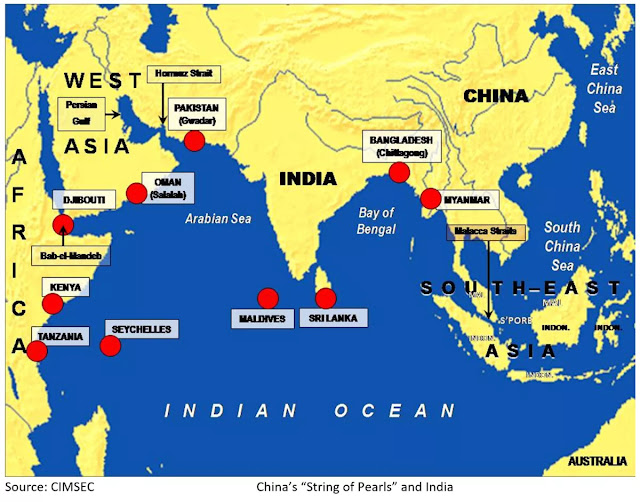Below Japan's Nuclear Weapon Breakout Capability of August 27, 2021 Gessler commented on August 30, 2021. Also note my redded responses/suggestions. Gessler said:
Looking at [South] Korea's Joong Ang Daily of August 29, 2021 "Expectations are rising that the Korean military will announce the development of an indigenous nuclear submarine within the year, according to military sources who spoke on the condition of anonymity..."
It seems the South Koreans are intent on following-up the KSS-3 with a nuclear-powered multi-purpose [called KSS-N aka KSSX-N] submarine of approx. 5,000 tons displacement & 100-meters in length. [This coincides with my October 25, 2019 report where an SK study looked at the option of using a French Barracuda class nuclear sub design, which just happens to be 5,000+ tons and is 99.5m long.] Not that different in size & scope from India's Arihant-class SSBN [Arihant is an estimated 6,000 tonnes and 111m long]. Plus as per the article they'd want to put up to 10 x SLBMs on it, though these are much smaller/shorter-ranged ones than what are carried by the Indian subs.
Two points of note:
1) If they are serious about submarine-launched ballistic missile capability, conventional explosives don't make much sense, only nuclear warheads do. I believe you wrote a good piece on this very topic a while back.
[Yes in my article S Korea Hedging with its KSS-3 Ballistic Missile Submarines of July 7, 2021 I wrote: "(SK) deploying its KSS-3 ballistic missile submarines shows an intention to eventually arm the ballistic missiles with a deterrent warhead - which can only be nuclear...If the SK warheads remained just conventional high explosive this would confuse North Korea (NK) (and everyone else) as to why SK is building ballistic missile submarines of 3,500-4,000 tonnes armed with ballistic missiles with a TOTAL high explosive throw-weight of only 6 to 10 tonnes."]
2) If SK decides to go nuclear (both in terms of warheads & submarine propulsion), then Japan cannot be expected to sit back & watch considering they have a direct rivalry with the Koreans and the mutual distrust seems to be growing in recent times.
[Indeed. My article Japan's Nuclear Weapon Breakout Capability of August 27, 2021 talks about Japan having the 3 major components (delivery platforms, U and Pu explosives and nuclear device knowledge) for a nuclear capability for decades. Also see my S. Korean & Japanese Nuclear Submarine Propulsion & Weapons of April 12, 2020. At the DSME website is Nuclear Propulsion Ship]
A declining & increasingly isolationist US might prompt both of its East Asian treaty-bound & nuclear umbrella-sharing Allies to decide to go nuclear independently as they might think the US can no longer be depended upon to fulfill its obligations.
This is going to be an interesting decade, that's for sure.
[True. US isolationism or, at least, downgraded relationships with Indo-Pacific allies, may be more than just a Trump policy. There is a risk it may become a US bi-partisan policy, now led by Biden, with US public support, for years.]
PETE COMMENT
It is difficult to assess how imminent an OFFICIAL South Korean plan to build SSBNs might actaully be. There has been speculation that South Korea might be interested in developing nuclear propelled submarines (presumably nuclear armed) since 2009 if not earlier. Normally South Korea press speculation comes from anonymous South Korean military tip-offs of the type in this August 2021 instance.
There are numerous addition articles at Submarine Matters on South Korean SSBNs, SSBs and nuclear warhead ambiguous SLBMs. Just click on https://gentleseas.blogspot.com/search?q=nuclear+south+korea+submarine+KSS and you'll see more than 10 artcles, particularly if you scroll down and click on "Next Posts".
I would say the US retreat from Afghanistan is one tip-off prompter. Ongoing North Korean nuclear threats another.
But what may be worrying South Korea most is North Korea restarting its Yongbyon reactor in July 2021 with Yongbyon believed mainly there to produce Pu for nuclear weapons. Also the Yongbyon complex hosts a laboratory which may have been reprocessing spent reactor fuel since March 2021. Any IAEA and US protests seem muted with international attention focussed on Afghanistan.
At a minimum South Korea may be reminding the US of the US nuclear umbrella promise against North Korea. Although as South Korea is ramping up its vertical launch plans toward 10 missile silos for its KSS-3 (future) Batch 2s a later Batch with nuclear propulsion might be a logical step. I also flag South Korea's nominal GDP is equal to or greater than Russia's. So a South Korea SSBN is not as outlandish as many might think.
Gessler and Pete










